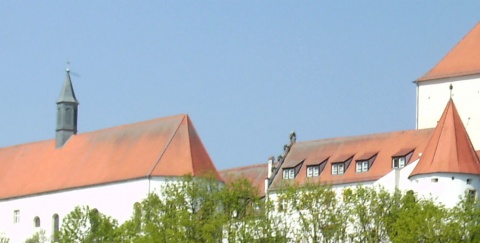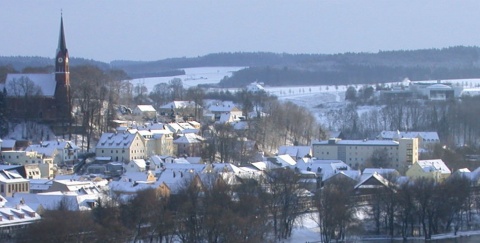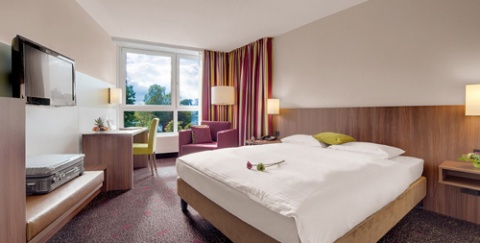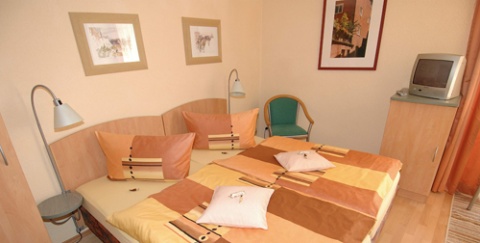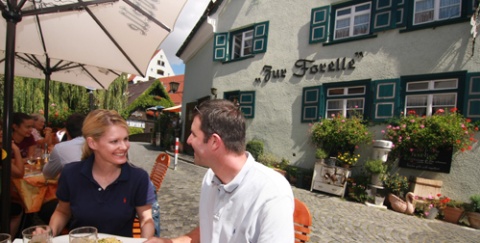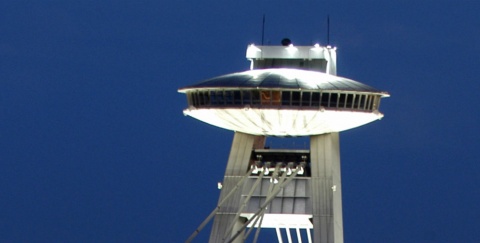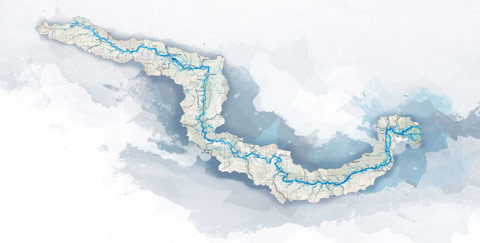

Straubing
Ever since tourism took off in the 19th century, Straubing has been renowned for its beauty. In a place once settled by Celts, Romans and ancient Bavarians, today there stands a magnificent town on the Danube. With its well-preserved medieval layout, sweeping town square, splendid historical buildin...
Country: Germany
Located in East Bavaria, Straubing is a medium-sized town of 45,000 inhabitants and one of Lower Bavaria's regional administrative centres. It is the largest town in the Gäuboden, the fertile area beside the river Isar. Sometimes referred to as the Dungau, this region of Lower Bavaria, whose geographical and cultural boundaries can never quite be agreed upon, is a roughly 15km wide strip of land stretching south from the Danube and the Bavarian Forest. One of the largest silt areas in southern Germany, it is a natural habitat for a wide range of animal and plant species.
City Highlights
The centre of Straubing, which dates back to the 13th century, is a unique historical record. The Gothic clock tower (the town's most recognisable landmark), the baroque Ursuline Church, the Basilica of St. Jacob and the church of the Carmelite Monastery (both late-Gothic hall churches), the ducal palace on the Danube... These and other impressive buildings provide further evidence of Straubing's heyday in the 14th and 15th century, when the town was the seat of the Duchy of Straubing-Holland. The imposing and brightly coloured merchant houses that line the town square are testament not just to their owners' prosperity but to their cultured outlook on life. Historical jewels abound: the town hall, Romanesque Church of St. Peter with its cemetery, one of the most atmospheric anywhere in the German-speaking world, the Church of St. Vitus, which was given a baroque overhaul in the early 18th century, the Trinity Column and the Pilgrimage Church in Sossau.
Construction began on the triple-naved Basilica of St. Jacob, a late-Gothic masterpiece with its apse chapel and choir ambulatory, in the early 15th century. The interior of this papal basilica dates from the Gothic to the present day. Highlights include the late-Gothic/neo-Gothic high altar, the medieval and early modern burial monuments and the stained glass window cycle, including the Moses window based on a design by Albrecht Dürer. Almost 200 years earlier, on the remains of a Roman fort and Carolingian-Ottonian church building in the ancient centre of Straubing, the Augsburg diocesan chapter erected a triple-naved pillar basilica, St. Peter's. The church has two beautiful Romanesque tympana, a Romanesque Christus from around 1200 and a Pietà from around 1340. The walled cemetery with graves dating from the 14th to the 19th century is one of the most important and beautiful cemeteries in the German-speaking world. It is particularly notable for its Gothic Chapel of Our Lady, the Agnes Bernauer Chapel, and the All Souls Chapel with its 'dance of the dead' frescoes, painted in 1763 by Straubing artist Felix Hölzl.
The Gäuboden Museum is one of the region's most interesting museums. Here you can see the Straubing Roman hoard and the unique jewellery and weaponry of the ancient Bavarians. Alongside archaeological finds providing an overview of settlement in Straubing from the early Neolithic Age to the founding of Bavaria as a separate state, the museum showcases sacred art, the religious life of the people and various chapters from the town's history. The museum can trace its roots back to 1845. Housed for a short time in the Powder Tower and in the eastern annexe of the Clock Tower, the collection, which had grown substantially, was moved in 1908 to what had been a grand town house at 23 Fraunhoferstrasse. The purchase of the two neighbouring merchant houses in 1982 allowed the collection even more room.
The Sorviodurum Roman Park encompasses parts of the southern fortifications of the former stone fort. Information boards explain the history of the Roman Limes and the Roman history of Straubing, while casts of stone memorials show scenes from everyday Roman life. The site can be overlooked from the viewing platform that doubles as a children's play tower. Entrance and parking are on Schlesische Strasse. The park is open daily during daylight hours and entrance is free.
Straubing Zoo is East Bavaria's only zoo and is well worth as visit. There is an Africa enclosure; a children's zoo and playground; a Danube aquarium with fish, amphibians, reptiles and small aquatic creatures from the Danube ecosystem; the Danubium, a wetland habitat for otters, beavers and pelicans; a walk-in stork enclosure; an 'exotarium' containing tropical birds, reptiles and fish; and the tropical Danner House with natural habitats recreated for small mammals, birds, reptiles and insects, and larger enclosures for apes, bears, big cats, penguins and hoofed animals. There is also a farmer's hut from the Neolithic Age and the Forest House, where you can take an audiovisual tour of the Bavarian Forest. And this being Bavaria, there is also a beer garden!
Accommodation in Straubing
Cyclists can find accommodation in the town's youth hostel or in bike-friendly hotels, low-cost private lodgings, or the Straubing campsite on the banks of the Danube.
Activities in Straubing
Straubing is a good starting point for exploring the Danube by boat. Routes include Straubing - Passau and Straubing - Bogen, departing on various dates from July to early October, but always at the weekend.
The Via Nova, a spiritual, multi-faith pilgrim route, which is also used as a hiking trail, starts in St. Wolfgang in Upper Austria. The trail has been extended in various phases and now reaches Mallersdorf-Pfaffenberg. The route through Straubing leads via the Danube Cycle Route to the lock and on into the town centre along a centuries-old pilgrim trail. Two significant Straubing pilgrimage churches are stops along the Via Nova: the Pilgrimage Church of St. Mary in the northern district of Sossau, originally a Romanesque church with noteworthy baroque and rococo features, and the Carmelite Church, renovated in the baroque style, with its late-Gothic painting Mary of the Nettles, considered by believers to be a miraculous image.
Straubing lies on various attractive and well-signposted national cycling paths: the Danube Cycle Route; the Tour de Baroque from Neumarkt in the Upper Palatinate to Passau; the Via Danubia, which follows the Roman trail along the Danube from Bad Gögging to Passau; the Laaber Valley Cycle Route from Neufahrn to Straubing; and the Grosse Laaber Cycle Route, which runs for 83km from Kelheim to Straubing through the valley of the Grosse Laaber river.
At the Aquatherm Straubing pool complex you can enjoy thermal and mineral waters from the quality-certified Sorviodurum spring, plus a six-lane, 25m pool, two heated outdoor pools and a non-swimmers' pool with play area. There is also a toddler and baby area, free steam sauna, sunbeds, quiet room and bistro. The open-air swimming area boasts a 50m stainless steel pool. Other features include: stainless steel diving pools, a wide waterslide and a giant 80m slide, a huge funpool with counter-current, water spouts and fountains, a water mushroom, a shaded baby and toddler area, two warm water pools, Kneipp hydrotherapy pools, an adventure playground, a park-like sunbathing area with large trees, a sun terrace, table tennis and ball games areas, and a terrace bistro.
Straubing: Roman treasure and regal splendour
Contact:
Tourist Office
Theresienplatz 2
Theresienplatz/Simon-Höller-Strasse
94315 Straubing
Tel.: +49 (0)9421 944 307
Fax: +49 (0)9421 944 103
tourimus@straubing.de
www.straubing.de
Opening times:
Monday, Tuesday, Wednesday and Friday from 9am to 5pm
Thursday from 9am to 6pm
Saturday from 10am to 2pm
November - March: Saturday from 10am to 1pm
DANUBE.TRAVEL has no control over the website content generated by users and/or visitors, neither such content represents a statement, opinion, recommendation or rating by DANUBE.TRAVEL. For further information please refer to DANUBE.TRAVEL – General Website Terms and Conditions of Use.
 EN
EN DE
DE
